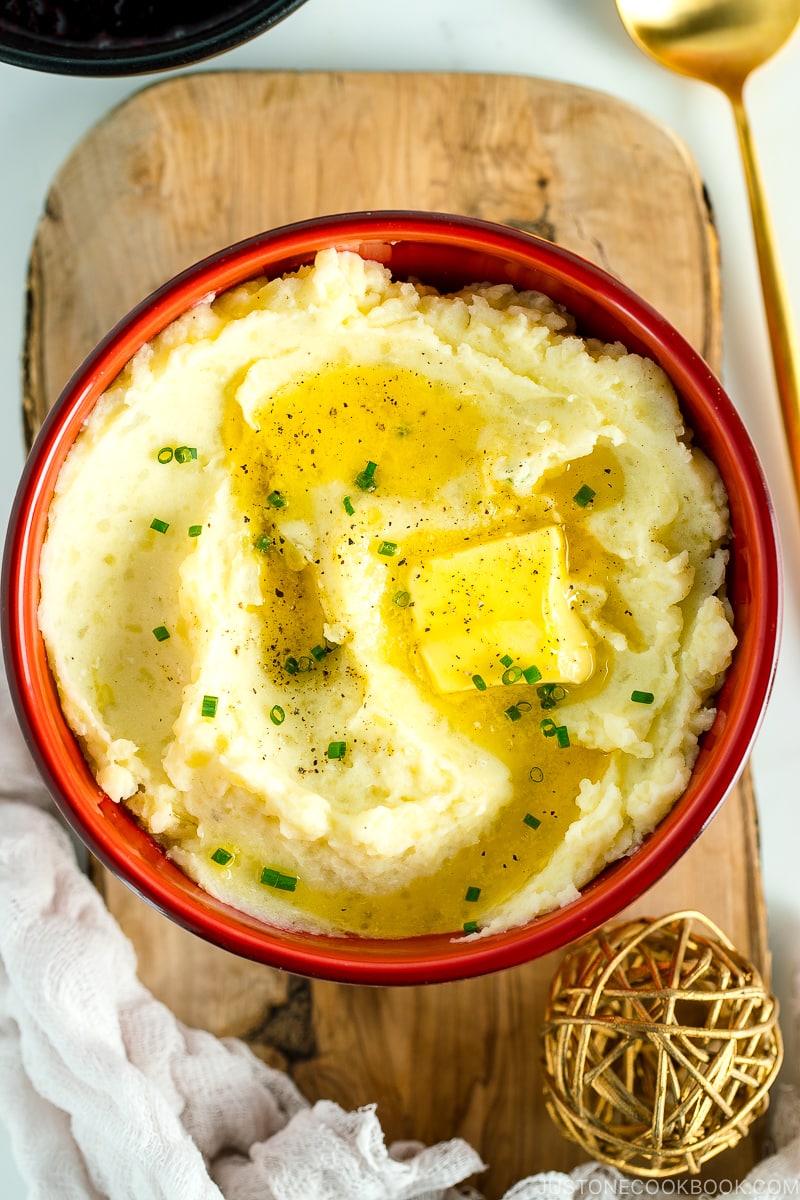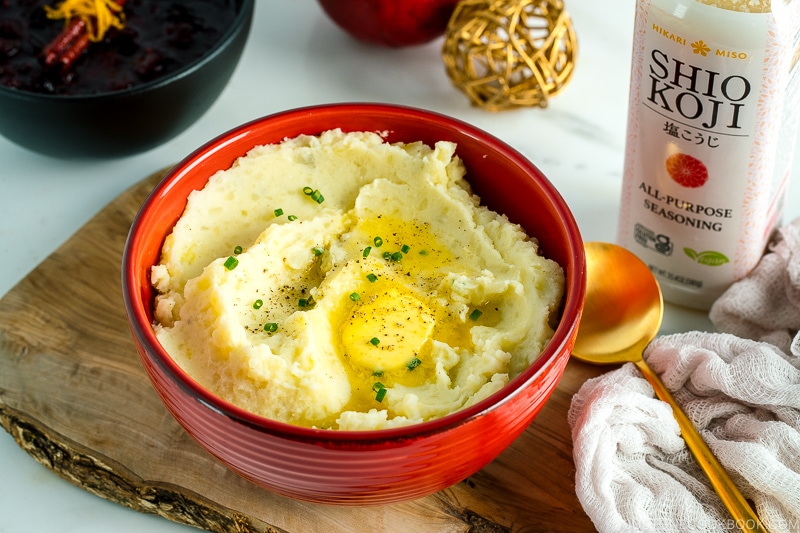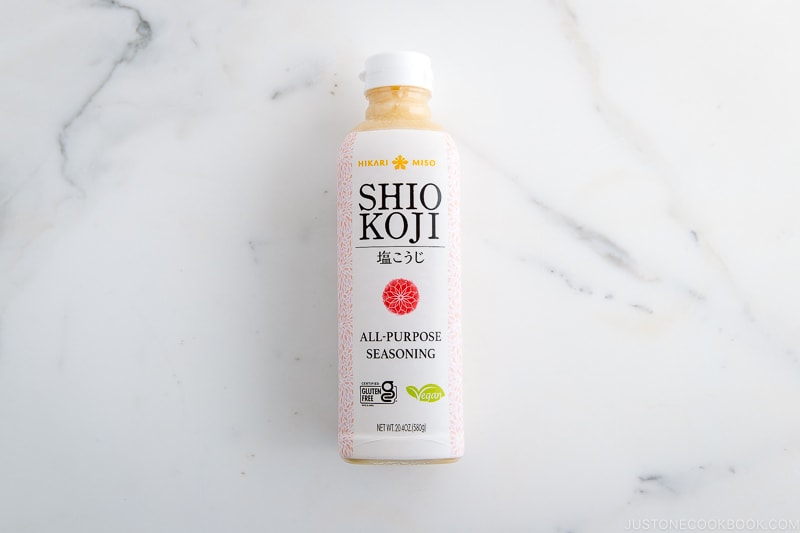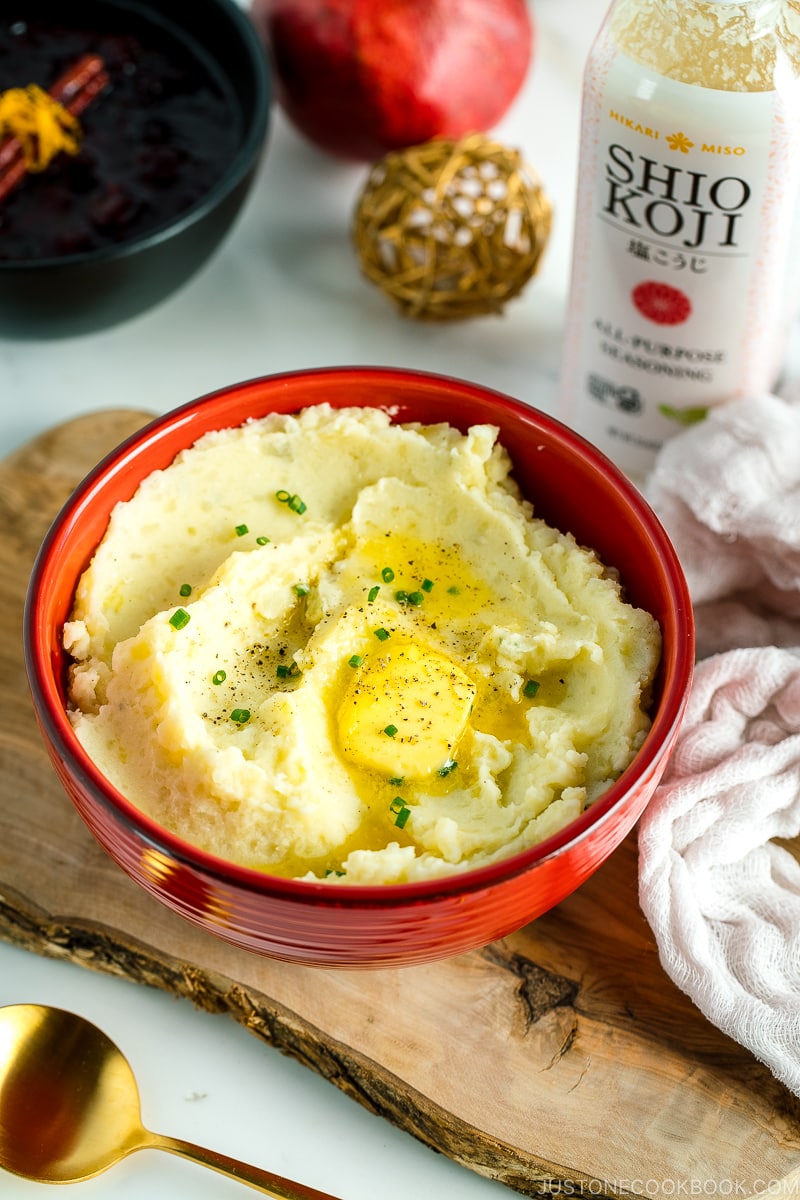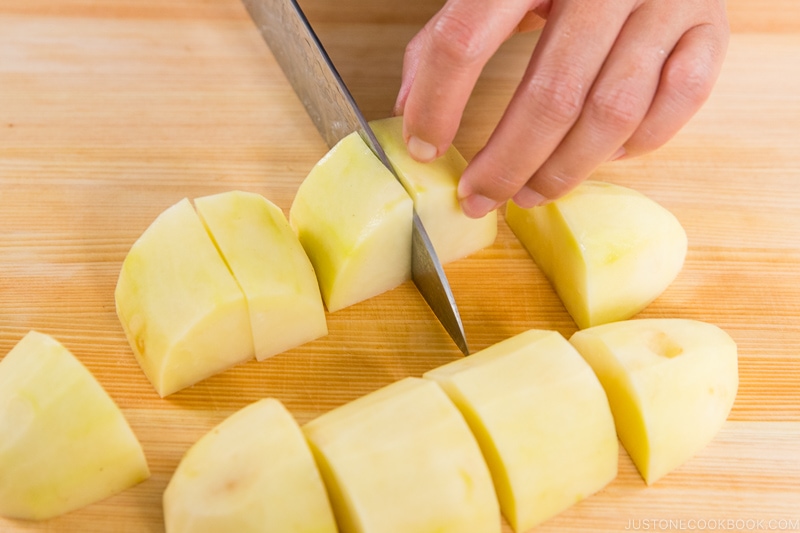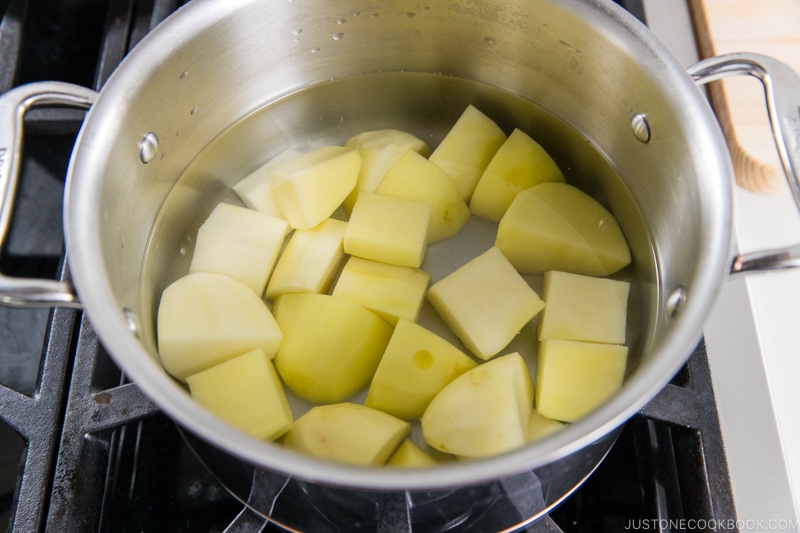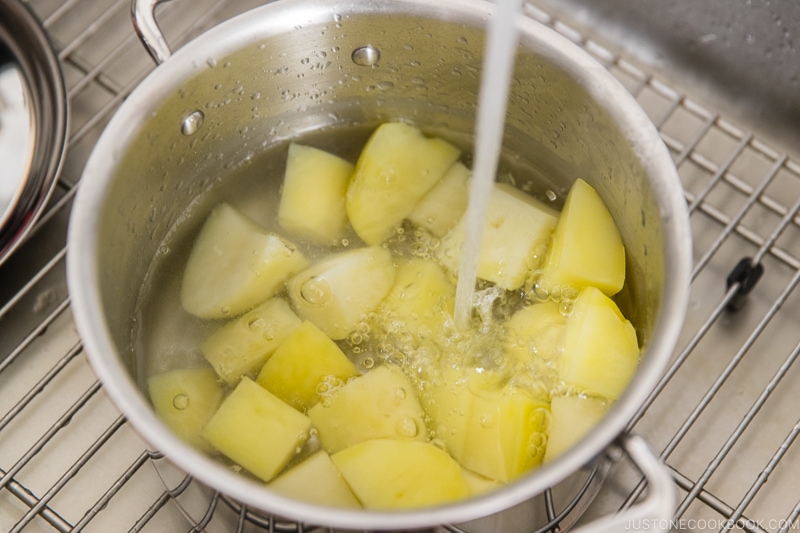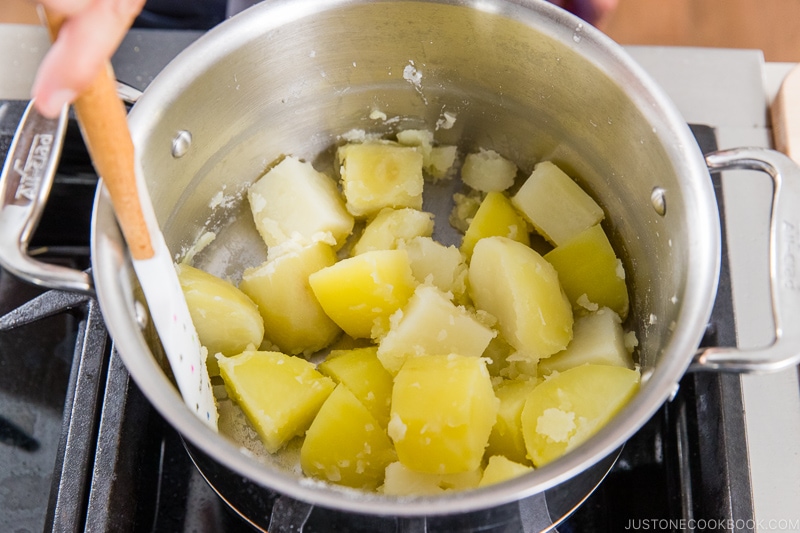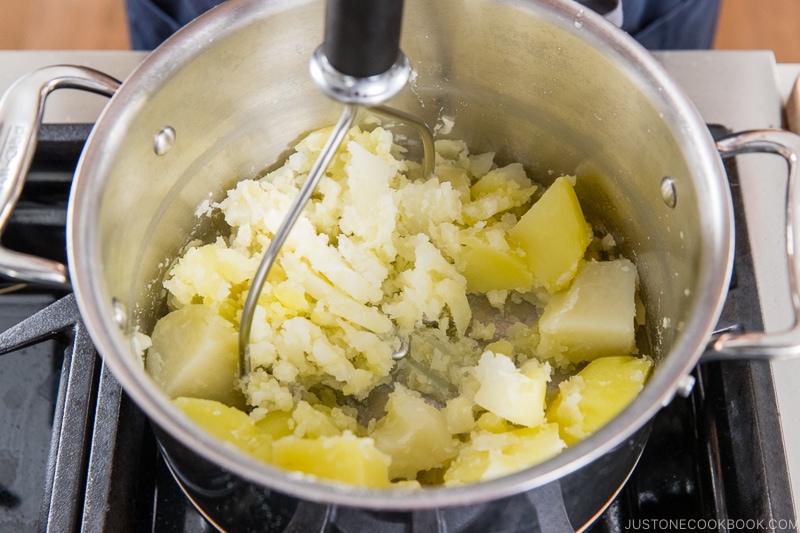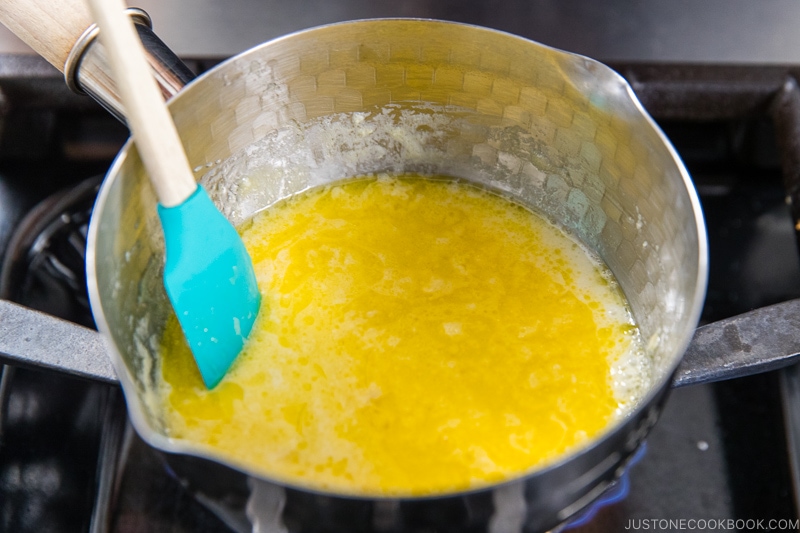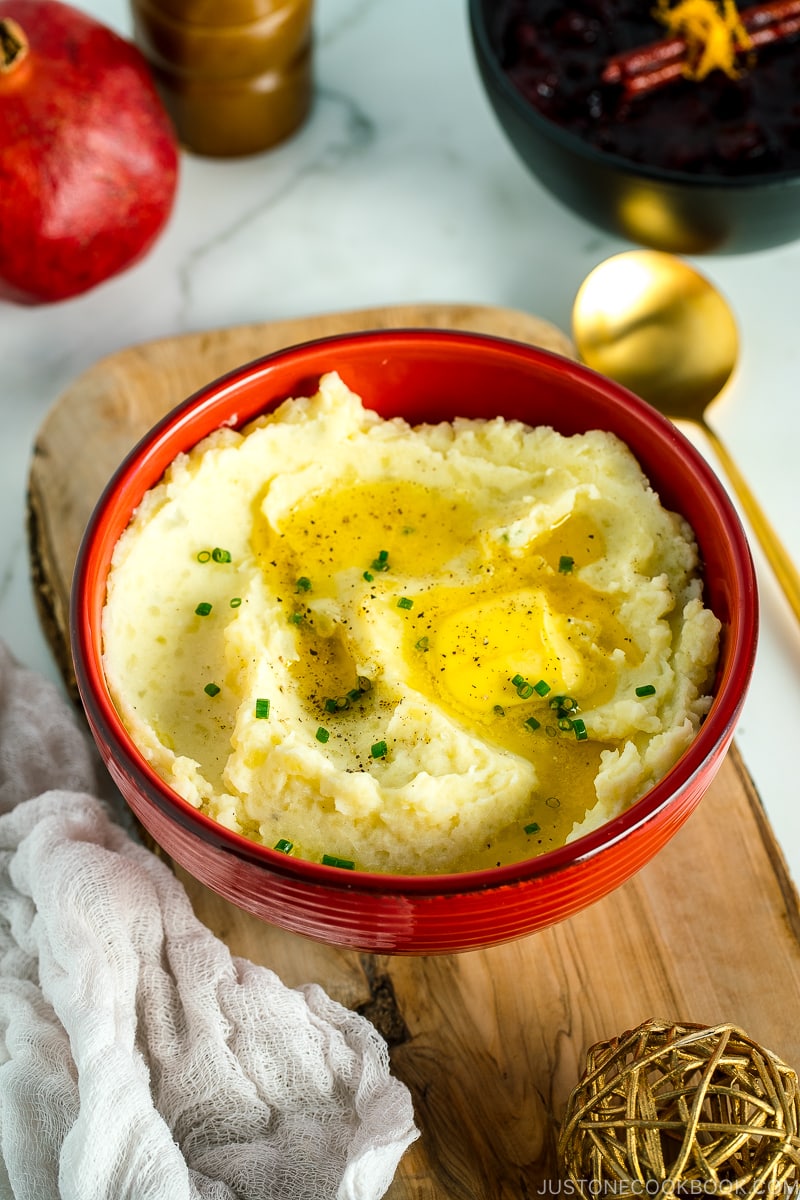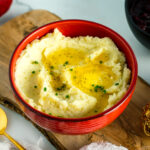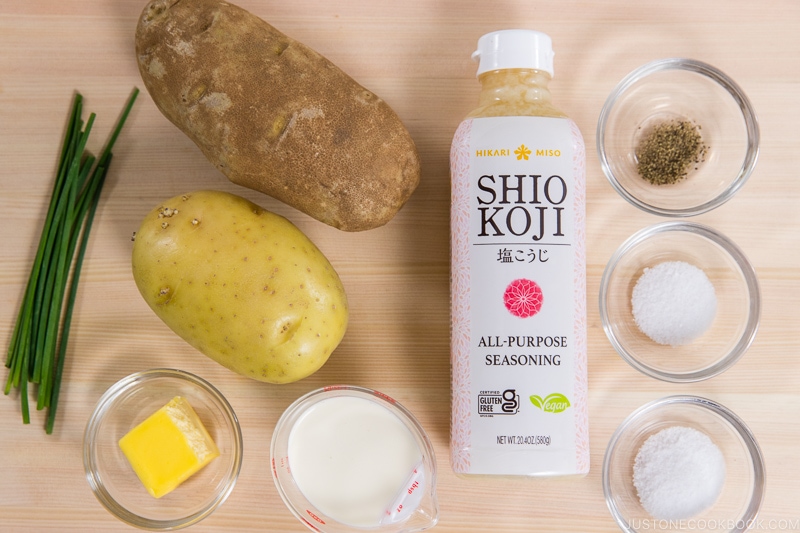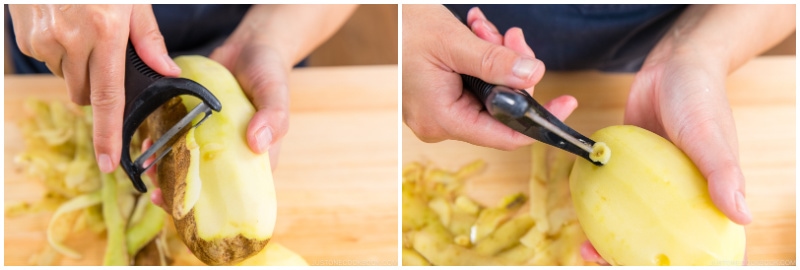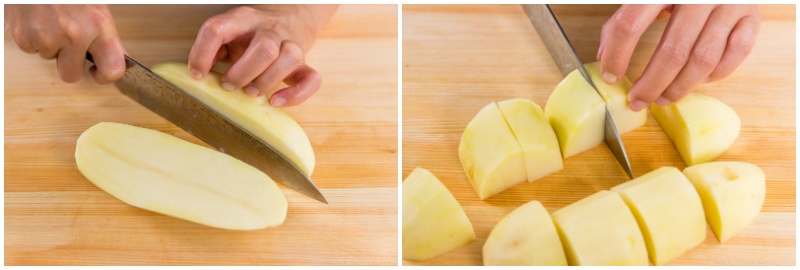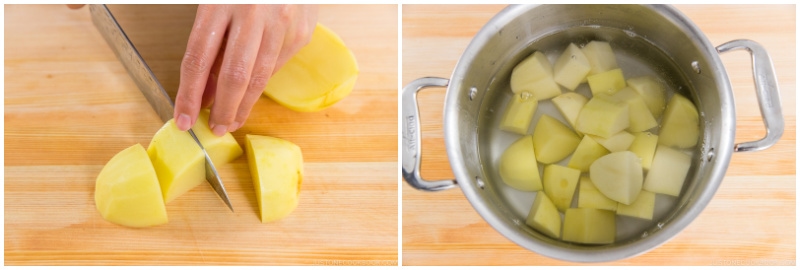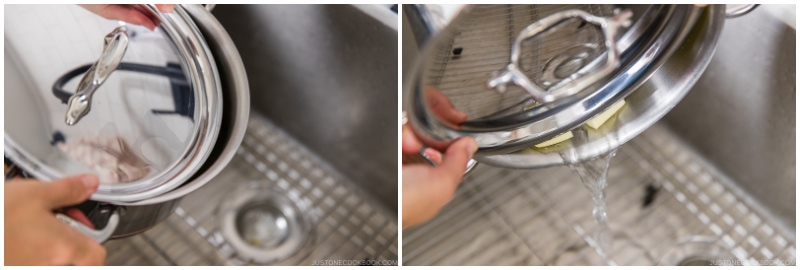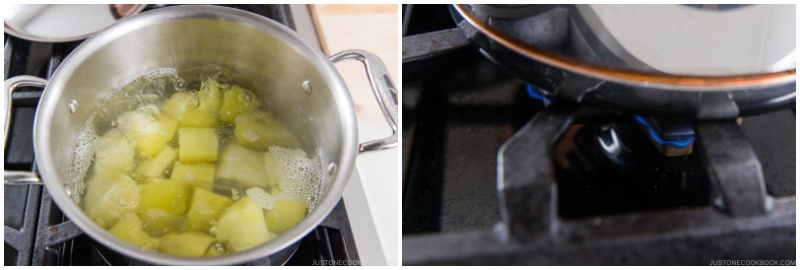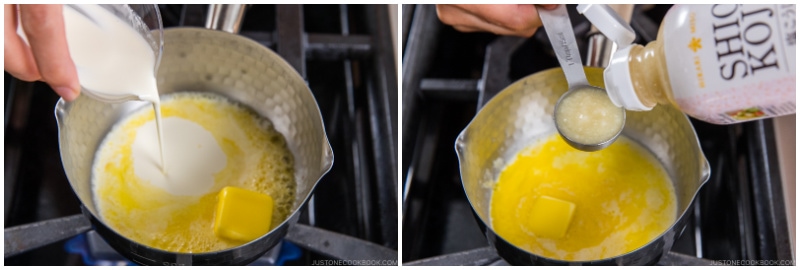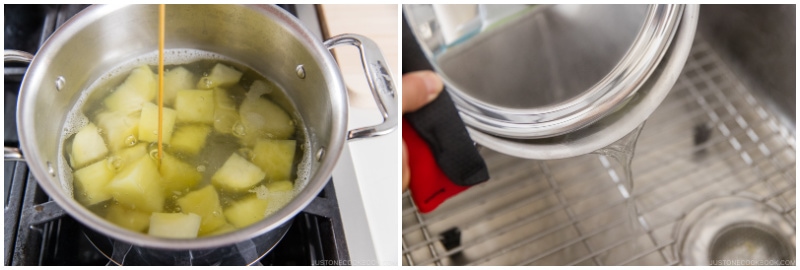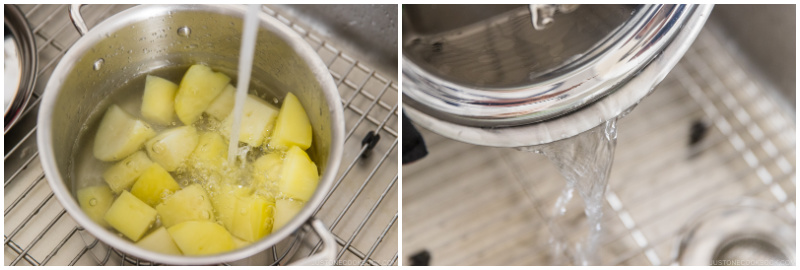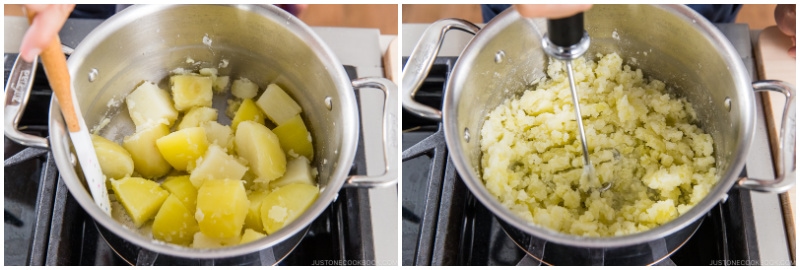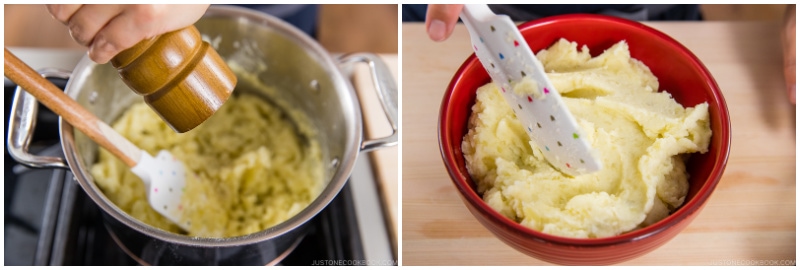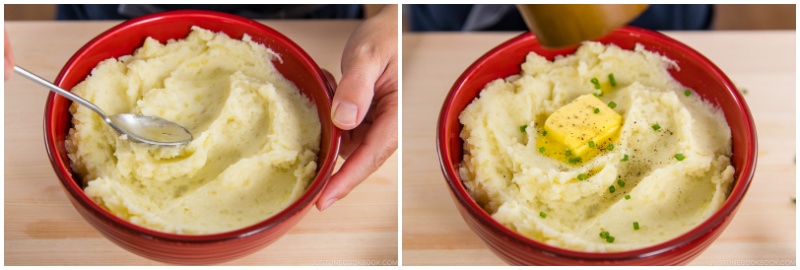There’s nothing quite like a warm bowl of creamy, comforting mashed potatoes. In fact, it ranks at the top of my family’s Thanksgiving and Christmas menu. Today, I’m sharing a truly special recipe: Japanese-inspired Creamy Mashed Potatoes with Shio Koji (マッシュドポテト塩麹入り). If you’re looking to elevate the classic side dish, this recipe will become your instant favorite. At first glance, it may seem familiar, but after the first bite, you’ll be blown away by the deep, savory flavor. That’s the magic of Shio Koji!
What’s Shio Koji and What Does It Do?
Made with salt, water, and rice koji, Shio Koji is a traditional natural seasoning used in Japanese cooking. We use it to marinate, tenderize, and enhance the umami, or richness in foods. Shio Koji is a live food rich in enzymes, making it ideal for dishes like mashed potatoes. Similar to miso, it works wonders in bringing out the umami and natural sweetness of your ingredients. With Shio Koji, you can keep the ingredients simple, as this all-purpose seasoning alone adds incredible depth to any dish. For these mashed potatoes, I use Shio Koji All-Purpose Seasoning from Hikari Miso. It’s a simple seasoning, but absolutely game-changing!
Where to Find Shio Koji?
Shio Koji Substitute
If you prefer to stick with classic mashed potatoes without shio koji (still delicious — follow my tips!), simply add salt in the following two steps:
7 Tips to Make the Fluffiest Mashed Potatoes
- Use Both Russet Potatoes and Yukon Gold Potatoes There are plenty of articles online debating which potatoes are best for mashed potatoes. Russets, with their higher starch content, are a classic choice. They are soft and can be mashed into a light, fluffy texture. Since they break down easily, they release less starch during the process. Yukon Golds, on the other hand, have beautiful yellow flesh, a creamy texture, and a buttery flavor. They fall into the medium-starch category, which means they require more effort to break down and release more starch. After experimenting with various potato varieties, we firmly believe that a combination of Russets and Yukon Golds delivers the best results for mashed potatoes. Period. This combination provides optimal textural satisfaction. Give it a try!
- Cut Potatoes into 2-Inch Uniform Shape My mom believes potatoes should be boiled with the skin on, then peeled while still hot, using your hands. I can never manage it properly (my fingers are too sensitive to the heat!), so I opt to peel them beforehand. Personally, I don’t think it makes a huge difference (but don’t tell her). However, it’s important to cut the potatoes into uniform sizes so they cook evenly. I typically cut each Russet potato into 6 equal pieces and each Yukon Gold into 4.
- Cook Potatoes from Water Potatoes take time to cook until tender inside. It’s important to start cooking them in room-temperature water and gradually bring it to a boil. It typically takes about 10-15 minutes for the water to reach a boil, and another 10-15 minutes to cook the potatoes through. Adding salt to the water allows the starch in the potatoes to absorb it, resulting in more flavorful potatoes (similar to boiling pasta).
- Double Rinse, Please I used to make Japanese croquettes with my mom when I was growing up, so I knew we had to soak and rinse the potatoes with cold water before cooking to remove excess starch. What I didn’t know until recently is that you can also rinse the potatoes AFTER cooking. As J. Kenji López-Alt explains in his book The Food Lab (which Mr. JOC and I love for its cooking science references), after draining the water, quickly rinsing boiled potatoes with hot water removes even more starch. To my surprise, I found that this trick really improved the texture of my mashed potatoes.
- Dry Up Potatoes Russets are higher in starch than Yukon Golds, which means they absorb water more easily. To avoid excess starch and moisture, you can do the following steps: I’ll show you how to do it in the recipe card—it’s super easy! No one wants soggy mashed potatoes!
- Use Good Old Potato Masher or Ricer A ricer is probably the best tool for making mashed potatoes, but not everyone has one. The next best option is a good old potato masher (I use this brand). Don’t use a blender, food processor, or electric mixer.
- Warm the Butter and Cream Heat the butter, cream, and Shio Koji in a saucepan before adding them to the mashed potatoes. This helps the potatoes absorb the ingredients more easily, especially while they’re warm. Plus, you don’t want to lower the temperature of the mashed potatoes by adding cold ingredients!
How to Store Mashed Potatoes
Mashed potatoes are freezer-friendly, so you can definitely make them ahead of time or save your leftovers for later. Be sure to coat the potatoes with butter and cream; the dairy and fat help keep them fresh and ensure they heat up nicely and remain creamy. To store, you can either: You can choose to thaw the potatoes in the refrigerator a day before reheating to shorten the heating time, or you can reheat them directly from the freezer.
How to Reheat Mashed Potatoes
To reheat, there are a few choices, but below are my preferred methods:
Microwave: Place a portion in a microwave-safe bowl, cover it, and microwave at 50 percent power for about 5 minutes, stirring occasionally, until heated through. The time may vary based on the amount of potatoes and your microwave wattage. Once heated through, stir well and add butter or seasoning as needed.
Oven: Place the potatoes, thawed or straight from the freezer, in a covered casserole dish and bake at 350°F (180°C) for about 30 minutes, or until heated all the way through. Fluff and taste the potatoes. Add more butter, cream, and seasoning as needed.
What to Do with Leftover Mashed Potatoes?
If you’re tired of eating mashed potatoes, use them for these recipes!
Mashed Potato Teriyaki Pork Rolls Korokke (Japanese Croquettes)
Wish to learn more about Japanese cooking? Sign up for our free newsletter to receive cooking tips & recipe updates! And stay in touch with me on Facebook, Pinterest, YouTube, and Instagram.
